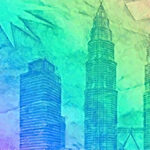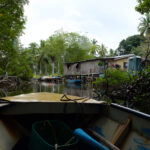Special Report
Love and Resilience: Stories from Queer Indian Malaysians
Discriminated against within an already disenfranchised community, queer Indian Malaysians struggle just to live day-to-day lives. ILAIYA BARATHI PANNEERSELVAM speaks to several individuals whose voices have been drowned out, forgotten and stifled.
N.B. Much effort was taken to represent the diversity within the queer Indian Malaysian community as best we could. However, due to various factors, Between The Lines only managed to speak to those individuals quoted in the story below. They, nevertheless, offer important glimpses into the community’s joys and struggles.
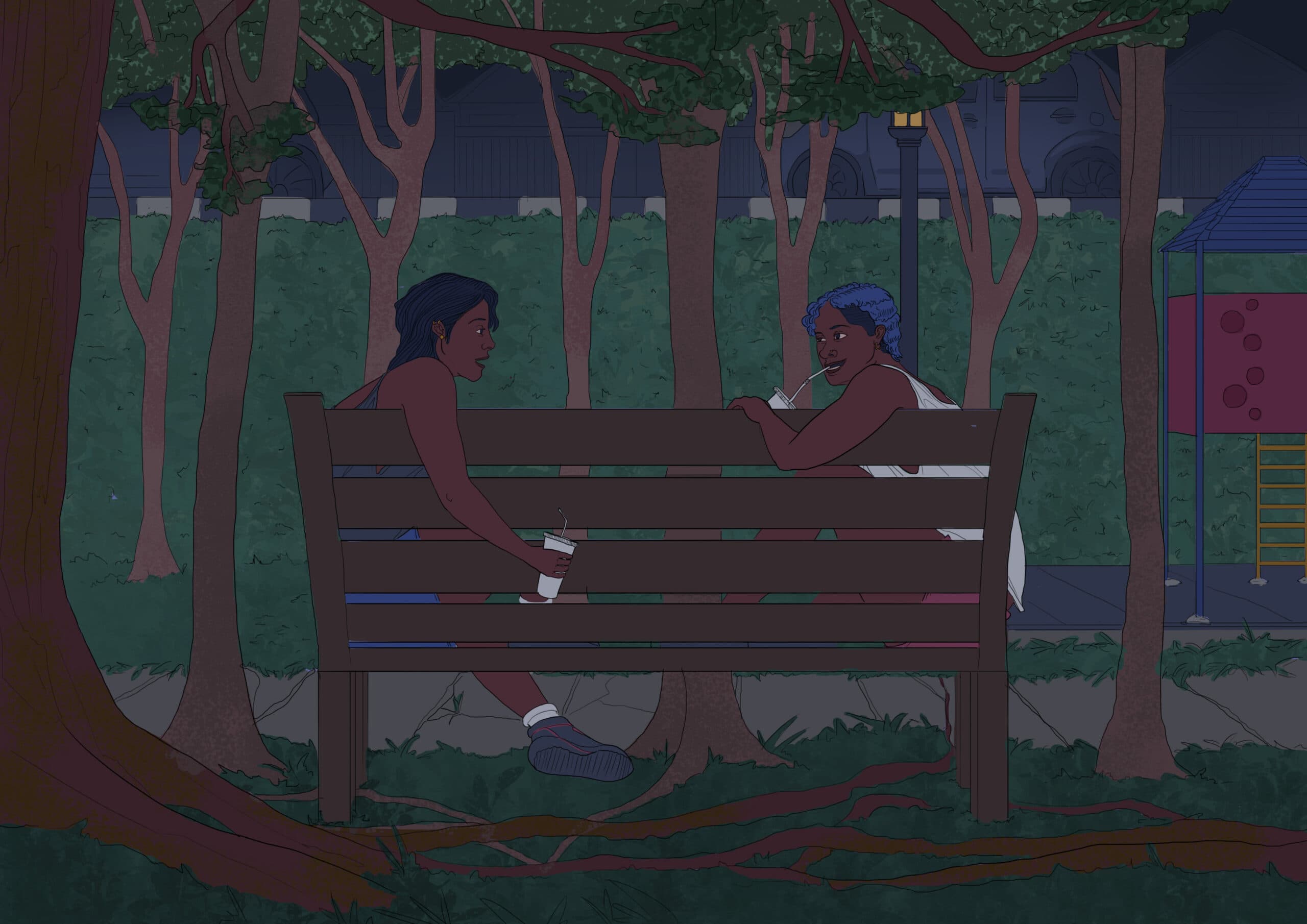
Discriminated against within an already disenfranchised community, queer Indian Malaysians struggle just to live day-to-day lives. ILAIYA BARATHI PANNEERSELVAM speaks to several individuals whose voices have been drowned out, forgotten and stifled.
N.B. Much effort was taken to represent the diversity within the queer Indian Malaysian community as best we could. However, due to various factors, Between The Lines only managed to speak to those individuals quoted in the story below. They, nevertheless, offer important glimpses into the community’s joys and struggles.
Illustration by Veshalini Naidu
First month free!
Get our newsletter to receive summaries on main Malaysian news, straight to your inbox!
MALAYSIA is a nation of rich and diverse cultures. Yet it is this same uniqueness that has sometimes resulted in the marginalisation of minority groups.
Indian Malaysians are one such group. And within this already disenfranchised minority is another whose diverse and different voices have not so much been silenced but often completely drowned out — queer Indian Malaysians.
The story of the Indian community in Malaysia is a fascinating one of migration and cultural adaptation. It is also one of struggle, prejudice, and a system that perpetuates and reinforces binary gender norms.
The complexity and richness of the Indian Malaysian experience, thus, means that the Indian Malaysian LGBTQ experience is equally complex and nuanced, and this is why the accounts of those we spoke to offer many different perspectives.
It is not the complete tale by any measure. Indeed, one thing to note right off the bat is that middle- and upper-middle-class Indian Malaysian LGBTQ individuals navigate their identities via different experiences from those who live hand to mouth. Nevertheless, these are the stories of those who agreed to speak to us. And they deserve to be told, and heard.
Never be out of the loop
Sign up for free to be updated on BTL columns and special reports like this one!
‘Right’ and ‘wrong’
“I’d always known that I was different … that I was attracted to men as a child,” Nickey (his chosen name), a drag performer, says. “(But) I think growing up, it did not register to me as an attraction. Around puberty (however), I’d see a guy that I found attractive, and for some reason, I’d just look at him.”
He adds, however, that he always felt like he was being “policed” at home, and conditioned to conform. That there was a “correct” way for one to live and be.
Families condition us from a young age with regard to this “correct” way. Passed down from generation to generation, this conditioning takes the form of beliefs and stories that relate to the past. Children then learn and internalise their families’ and communities’ values, beliefs, and practices throughout their development, with stories and anecdotes serving as informal guidelines.
Unfortunately, this state of affairs results in the reinforcement of a binary perspective, primarily from a patriarchal standpoint, of certain things having to be a certain way. This explains why pink is deemed a “girly” colour or why physically challenging activities are considered “manly”.
“Don’t listen to girls’ music, boys can’t or boys don’t cry, and boys don’t wear pink. Don’t walk like that, that’s not how a boy walks … there was very strict policing of my femininity,” Nickey says.
And the conditioning is prevalent in Indian Malaysian families, as it is in most Asian families.
“In an Asian family, the family bond is usually quite strong, and that results in remarks like ‘you must make the family proud’,” Chong Yee Shan, an LGBTQ activist, says, adding that there is also the idea of “shame”.
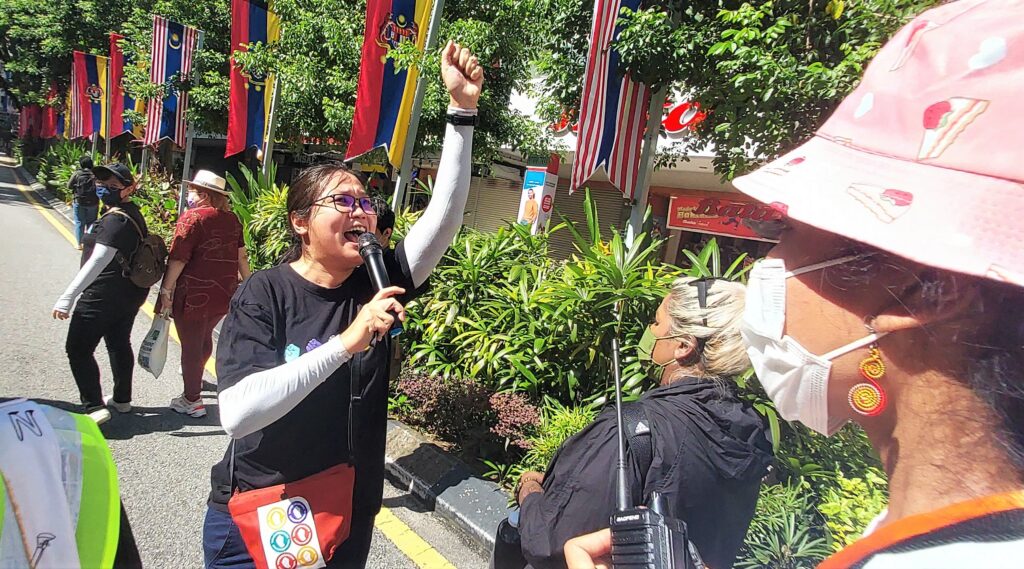
Faith and consequence
Kevin (his chosen name) explains that his experience wasn’t very different from others with strict families. However, what made coming to terms with his identity tougher was that he’d grown up in a family where speaking one’s thoughts and feelings was never an option.
There was also the small matter of having been brought up Christian.
This is why, at age 23, he turned to the internet and typed his all-important question into the Google search bar: Is it OK for me to be gay?
“I wanted as much confirmation as I could get on whether it was OK (to be homosexual and Christian). My thoughts were feeling very rushed at that point … I had wanted to be straight. I wanted badly to be straight. But there was also a part of me that knew that maybe I wasn’t. But that wasn’t apparent (to me) until I came out to myself,” he says.
Kevin’s conflicted emotions are understandable. After all, most, if not all, Christian theologians and denominations consider homosexuality a sin. But the situation isn’t any less complex in Hinduism.
Thilaga Sulethirah, the founder of Justice for Sisters, points specifically to the deification of transwomen (thirunangai in Tamil) in Hindu-Indian society and how that suggests a level of greater acceptance of queer individuals.
Thilaga recounts the experience of a transwoman they know: “This woman goes to the temple frequently, and (the devotees), like young couples or people who want to have children, ask for her blessings. There’s also this temple in Klang where devotions to a certain goddess are held and transwomen come to celebrate her festival in green saris.”
Despite that, however, acceptance is neither simple nor straightforward, as Tharani (her chosen name), a transwoman, says.
Indian Malaysians, Tharani explains, tend to view transwomen as a joke. She says she’s been insultingly called “ombathu” (a derogatory remark in Tamil used on effeminate individuals) and cat-called, even by friends and family members. Yet worse, she says, is that one of those who’d refused to accept her was her own father.
“My dad asked why I am behaving like an ‘ombathu’ and insulted me multiple times.”
Tharani says she is thankful, though, for the presence of one unwavering pillar of strength — her mother. But even then, it took almost 4 years to make her understand that Tharani’s soul had been trapped in a male body since her birth.
First month free!
Get our newsletter to receive summaries on main Malaysian news, straight to your inbox!
Race, class and family

The migration of Indians to Malaysia (previously Malaya) dates back to the 19th century when labourers were recruited for plantations. Essentially, both colonial authorities and the plantation industry saw Indian labour as a long-term, cheap and reliable replacement for lost slaves that would be able to meet the growing demands of the land and the British Empire’s plan for expansion.
Despite this fact, however, as well as the community’s role in developing both colonial and post-colonial Malaysia, and its efforts to integrate with the larger Malaysian society, a large majority remain poor and feel excluded from various aspects of daily life.
And this, coupled with certain cultural traits, practices and hangups of the community, make queer Indian Malaysians often feel like they are facing insurmountable odds.
Kevin explains that is why many people choose to hide their true selves and live in constant fear of getting “caught”, especially by their families.
He speaks about a particularly painful episode from his youth when, unprovoked, his father pinned him to a wall, and ordered him “to not be gay”.
Father and son had just been chatting in the living room of the family home, when out of nowhere and for no apparent reason, Kevin’s father charged at him. “He had a finger to my face, telling me that I should not be gay. ‘Just be normal like everyone else.’ I was terrified,” he recalls.
Still, perhaps, Kevin’s dad attacking him was not “unprovoked”, as it were. Perhaps it had all to do with the prevalent cultural notions of “shame”, “what will others say?” and “don’t rock the boat”.
JFS’s Thilaga explains: “Typically, queer individuals are harassed by people of their own ethnicity, like Indian queer women are often harassed by Indian men. So there’s the patriarchy within. For some people, meanwhile, there’s a sense (that) we are already so marginalised, (so) you shouldn’t be bringing shame.”
They explain further that it doesn’t always follow that more well-to-do, English-speaking Indian Malaysians are more tolerant of diversity.
“Even in some upper- and middle-class households, we have seen things like conversion practices take place. There have also been cases where people are taken to shamans, like samiyars, to perform rituals and to ‘buang sial’ (remove bad luck),” they say.
What is true, nevertheless, is that working class individuals face a lot of discrimination when they come out. They add, however, that there are always layers, and there’ve have been many instances of LGBTQ individuals being accepted by their working class parents when the latter start to feel “I don’t have a problem with my child (being) like this”.
Discriminated from within
Interestingly, the discrimination endured by queer Indian Malaysians extends to being ostracised by other queer persons. Indeed, there appears to be a prevalent othering of Indian Malaysians.
“I have had people avoid me or look at me in disgust as I walked by. Doing group assignments in university was difficult because I was a gay Indian. Even the queer community hasn’t really grown out of the mentality of racism, whereby Indians are unclean, not good-looking, and so on,” Smith (their chosen name) says.
Thilaga confirms this.
“If you’re on … some dating platform, you might get messages like, ‘No dark-skinned people’, ‘No Indians,’ or (some) other racist (message). In that sense, you face that sort of colourism and racism within the gay community (that one would find outside). And that then limits your ability to find relationships.”
Coming out
With so many challenges, thus, it’s no wonder that many queer Indian Malaysians consider repressing their true selves and not coming out at all.
Raghav (his chosen name), an information technology student at a local university, says that he himself had never thought he would come out. He’d spent years deliberating about revealing his true self to his family, in fact. Yet in a moment that he describes as “right robbed”, a friend revealed his truth to his family.
There was awkwardness at first, of course, but Raghav says that he was overwhelmed by the positive reception of his family. Despite their differences, their unconditional love and acceptance of him, he says, has buoyed his confidence. And that, was the turning point to accepting himself.
“They said, ‘Whatever it is, we are happy for you.’”
The “problem” with Raghav’s story, however, is that it is hard to gauge how family members and friends will react. Importantly, too, the reception is not always positive.
Smith, for example, holds out little hope of being accepted by a family in which even the wearing of henna and earrings by men was forbidden. Indeed, they say that “it makes no difference” whether their family accept Smith for who they are or not.
Kevin, meanwhile, has decided the best solution in his particular situation is to hide who he really is from his colleagues and acquaintances. This, he knows, is not ideal. But it is how he has endeavoured to cope.
“We may be setting ourselves up for a multitude of disappointments as we try so hard to fit into the shoes of the good son, husband or father,” he says. “… we have tried our best to adapt. (Yet) it (might) come at a great cost. Some of us have forgotten what love actually is and what being a human being is all about; that we are allowed to feel this wide spectrum of emotions and desires.”
And the greater tragedy, perhaps, is that when one forgets what love is, one forgets to love oneself. This, in fact, is what Tharani experienced at age 14, when she attempted to take her own life.
“I had no desire to continue living because I could no longer endure the agony,” she says.
If you’re overwhelmed, need help, or just a listening ear, you can contact the LGBTQ-affirming organisations listed here. Other mental health service numbers are listed below.
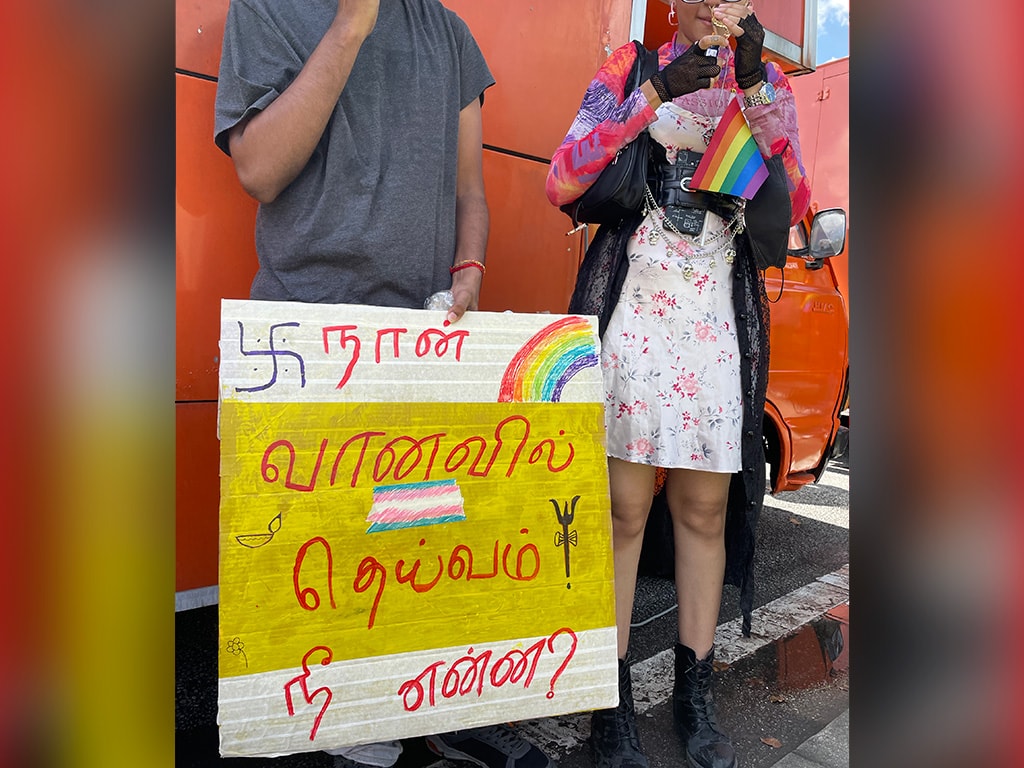
Where’s the support?
There’s been a dramatic rise in the prevalence of mental disorders in Malaysia in recent years, not least due to urbanisation, globalisation, and increased stress. There has also been an increase in suicides, especially during the worst of the Covid-19 pandemic.
Amid this, many LGBTQ persons have suffered in silence due to their being few avenues to address their mental health challenges.
This explains the reason for the louder calls for health facilities to offer safe mental health treatment for queer persons and why there has been more discussion on LGBTQ affirmative therapy.
Affirmative therapy, in a nutshell, is a form of psychotherapy that aims to validate and advocate for the needs of queer clients. Therapists, generally, express their acceptance of their lesbian, gay, bisexual, and transgender clients in words and actions; the aim being to help LGBTQ individuals feel comfortable with their identity and desires, which then leads to healthier and more fulfilling lives.
One of the problems in Malaysia, however, is that we just don’t have many LGBTQ-affirmative psychologists. And that means that LGBTQ Malaysians suffering from prejudice or minority stress aren’t getting the support they need.
Minority stress relates to the theory that sexual minorities face unique and hostile stressors like homophobia and victimisation, and these, consequently, have negative effects on health.
Thilaga explains: “Because we are minorities, we face additional stress because, for one, we are criminalised. So, there’s additional fear when we go out. When we are criminalised, discrimination can take place with impunity. And you have less confidence in the state or institutions to deal with the discrimination you face.
“In that sense, there’s a lot of fear. There’s (also) a lot of isolation, and a lot of times, it accumulates into stress.” And in the case of queer Indian Malaysians, there is “double marginalisation”.
“Indian Malaysian LGBTQs face more discrimination compared to other races. And a B40 Indian LGBTQ person is facing accentuated discrimination,” Yee Shan says.
“Furthermore, the language barrier is another issue for many Indian Malaysian LGBTQ individuals, as they have limited access to many resources, including social support, legal support, mental health support, and much more.
“So when they are discriminated against due to their sexual or gender identity, they don’t know where to get support, and even worse, they don’t know they can get support.”
Thilaga adds that there is an ostensible correlation between stress and discrimination or anti-LGBTQ sentiment. As a result, the Indian Malaysian LGBTQ community generally practices self-censorship and refrains from stating things openly, whether online or offline.
This is why, they say that self-care and speaking with therapists are essential. Nevertheless, assistance need not be limited to therapists, but also LGBTQ-affirming groups.
“Now we are in a space where human rights groups are well connected to LGBTQ groups. They will be able to connect you. We are also in a time where a lot of human rights groups are more queer-affirming, and provide the services or support one would need.”
Both Thilaga and Yee Shan stress, nevertheless, that they themselves don’t “help” but rather facilitate the improvement of Malaysian LGBTQ individuals’ lives.
Thilaga says: “I wouldn’t say it’s ‘helping’ because I’m a queer person myself. All of the things that I do affect me as well. I’m not removed.
Resilience and hopefulness
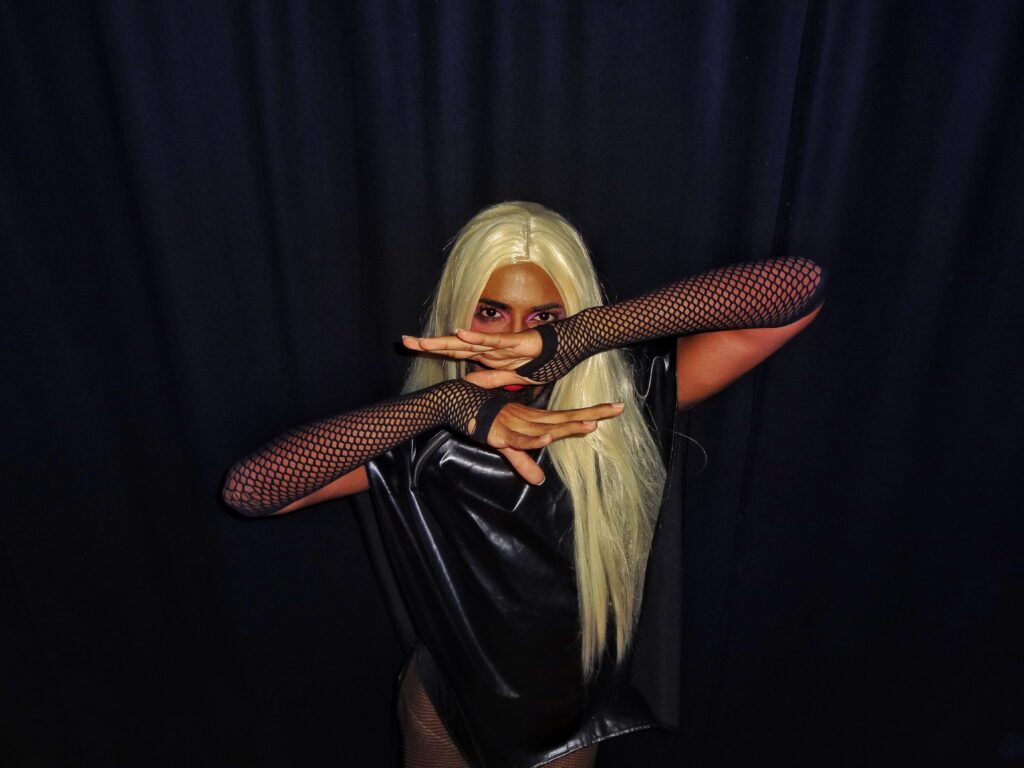
The nuances and complexities of the queer Indian Malaysian experience mean that there is no one-size-fits-all solution. And this, then, is why while some individuals are positive about the future and their present, not everyone feels the same.
“Looking back, these experiences have made me so much stronger and more resilient, which is why I drag or do whatever I like,” Nickey says. “If someone says something to me now, I will fight back.”
Raghav, however, is not so sure. He says that while he is fortunate to have his family’s full support, the harsh reality is that Malaysia doesn’t want LGBTQ individuals. This is why he can’t see a future for himself here.
Smith, meanwhile, suggests that perhaps what is most important is to focus on the light; on the support that groups and individuals offer Indian Malaysian LGBTQ persons here, and the positive experiences people have had.
They paraphrase Prof Albus Dumbledore in Harry Potter and the Prisoner of Azkaban: “Happiness can be found even in the darkest of times if one only remembers to turn on the light.”
If you’re overwhelmed, need help, or just a listening ear, you can contact the LGBTQ-affirming organisations listed here or these mental health services:
- Befrienders
0376272929
https://www.befrienders.org.my - Sneham Welfare Organisation Malaysia
0102005722
Sneham Malaysia FB Page - Malaysian Mental Health Association (MMHA)
0327806803
https://mmha.org.my - KKM-Mercy Malaysia Hotline
0329359935 - Talian Kasih
15999
The main image was illustrated by Veshalini Naidu. Veshalini is a multidisciplinary artist who merges poetry, visual arts and theatre in their response to gender, sexuality and race in Malaysia.
*This report was produced with support from Queer Malaysian Indians, and ILGA.
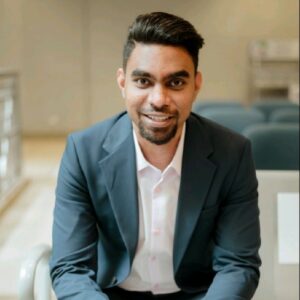
Ilaiya Barathi Panneerselvam
Barathi is an writer, activist and academic in the field of communication. His involvement in causes near and dear to his heart stems from his strong feelings about the injustices meted out to the poor, the powerless, and the working class in both film and society.
Finally! A newsletter that keeps it nice and short.
At Between the Lines, we summarise and contextualise the most important Malaysian news for you.
Subscribe to our bi-weekly morning Email Newsletter for your bite-sized news of all that you need to know in Malaysia and beyond for only RM10 a month/ RM100 a year! First month’s on us.



